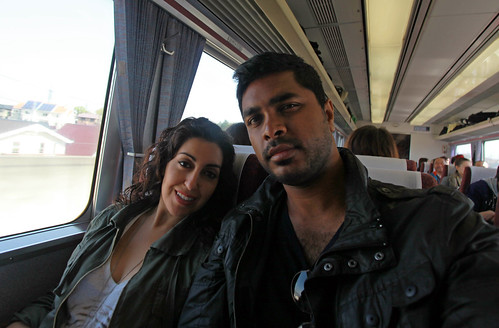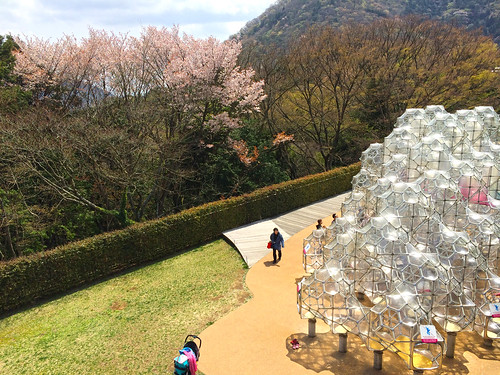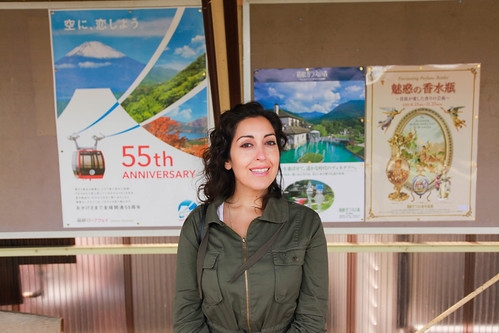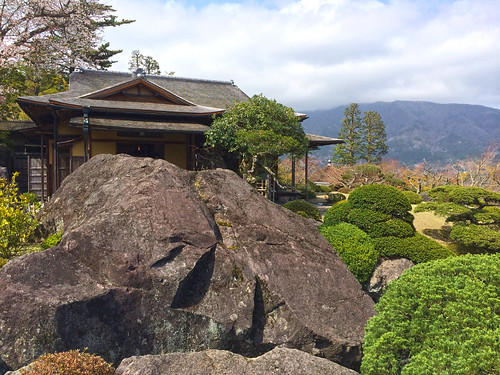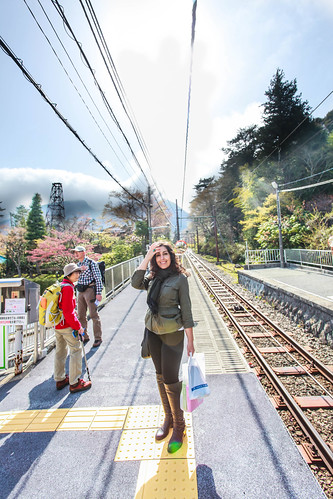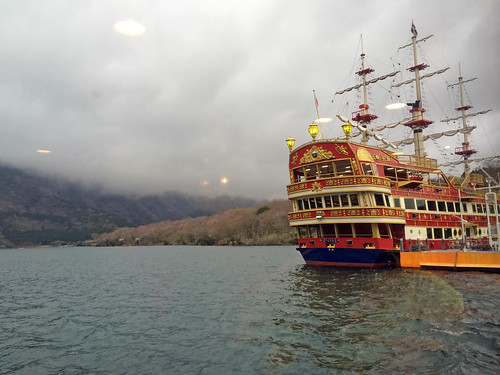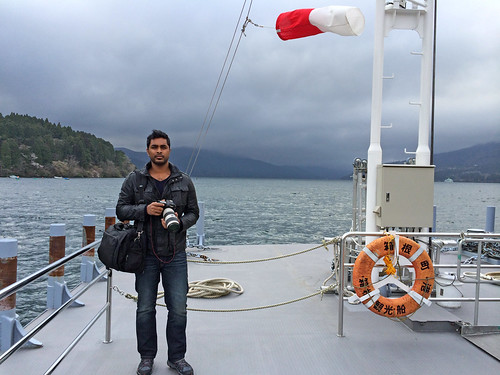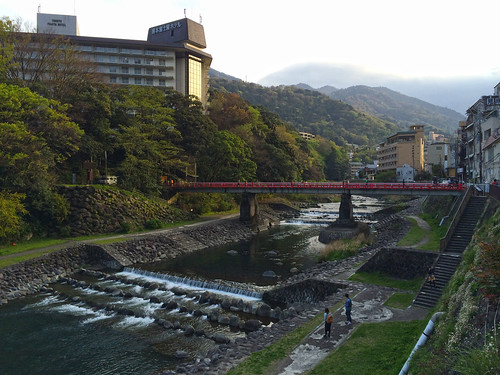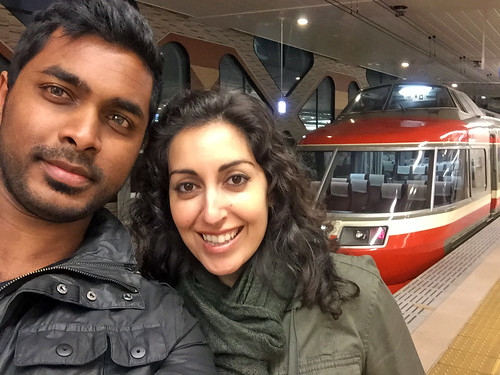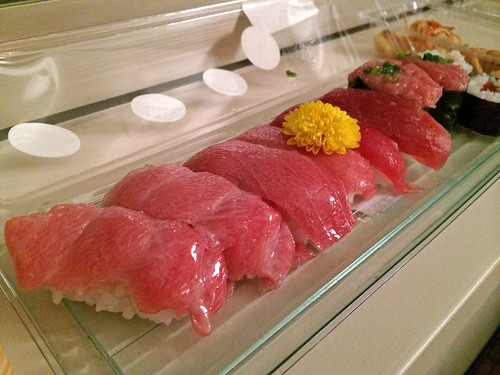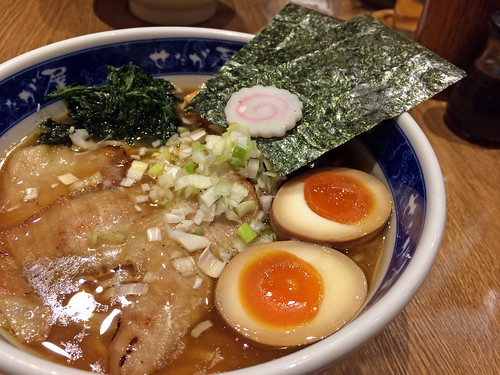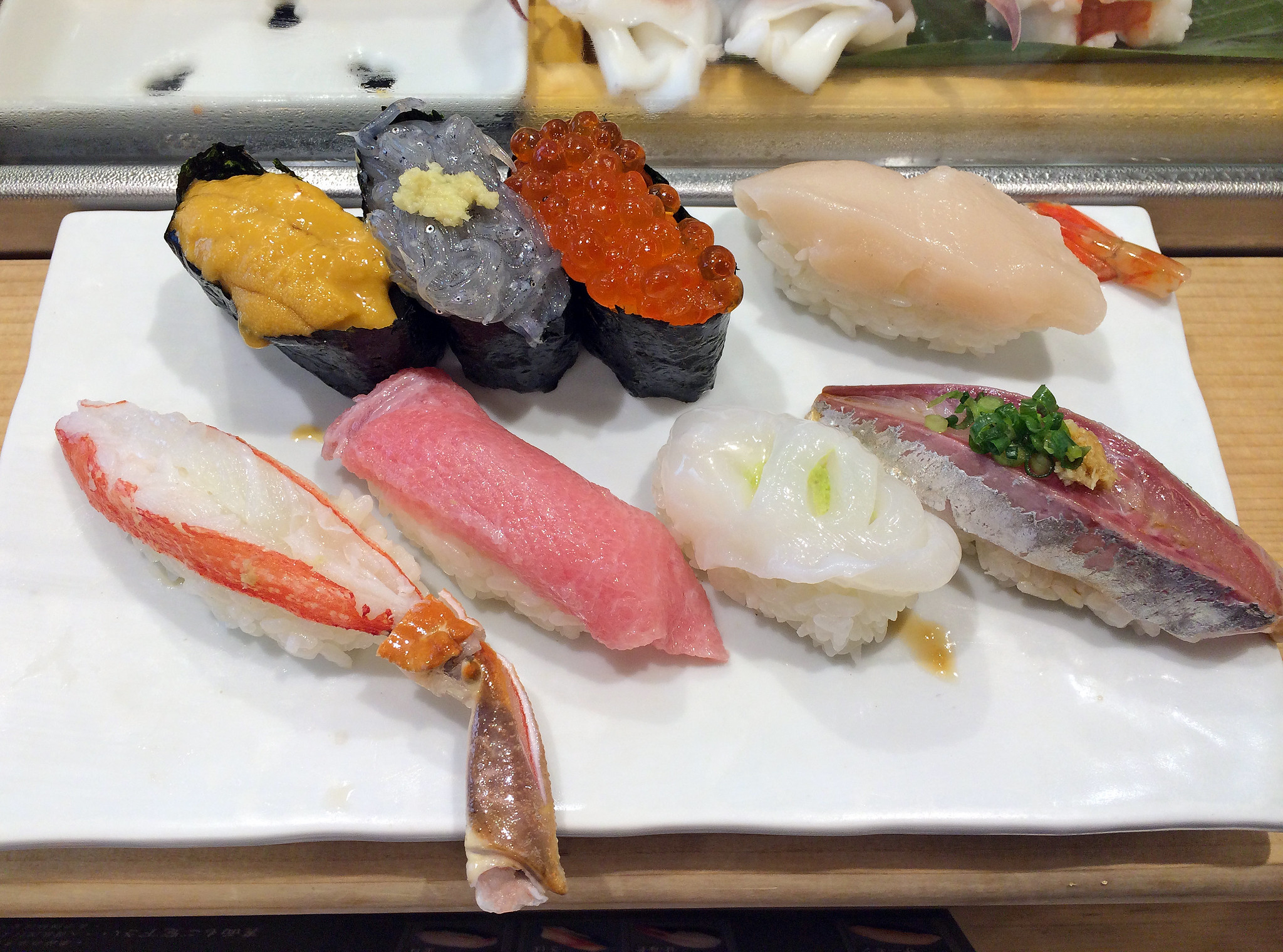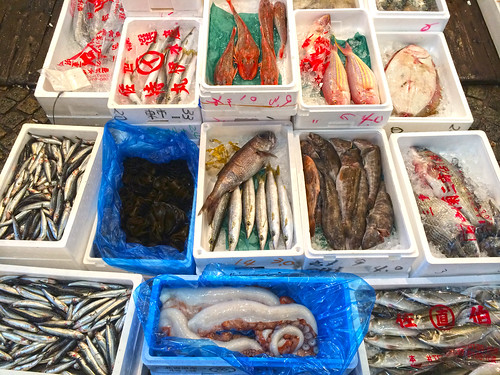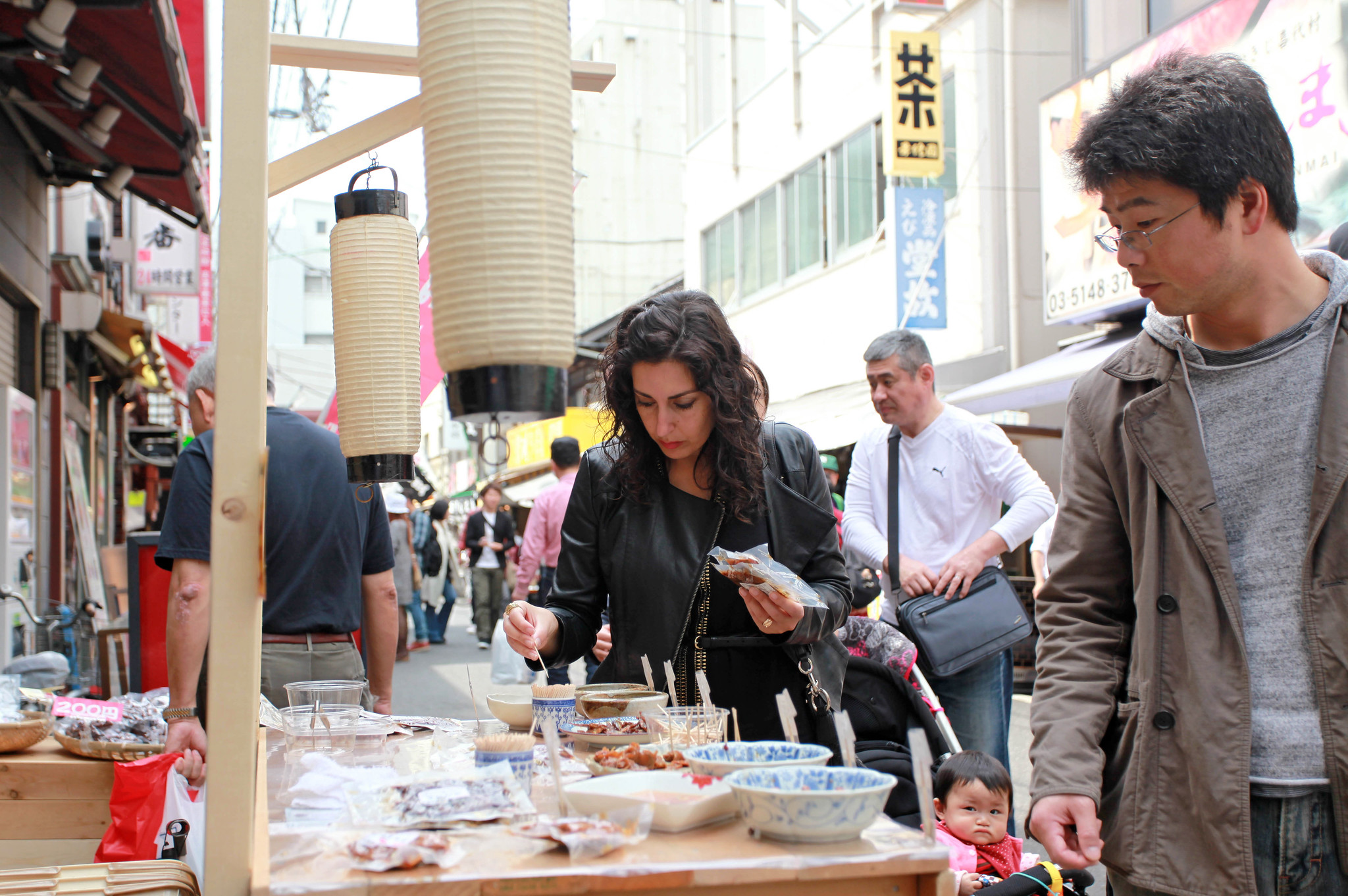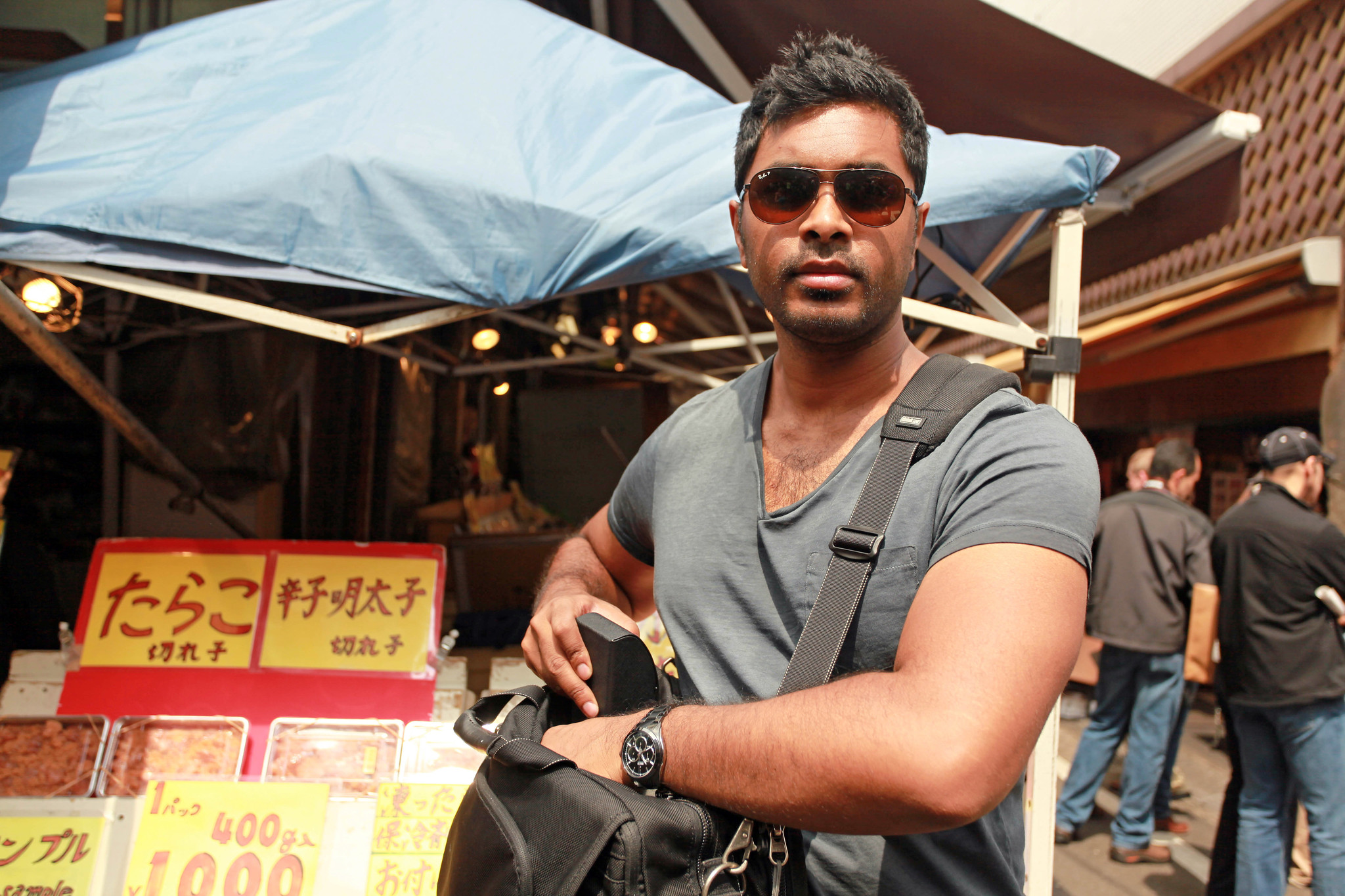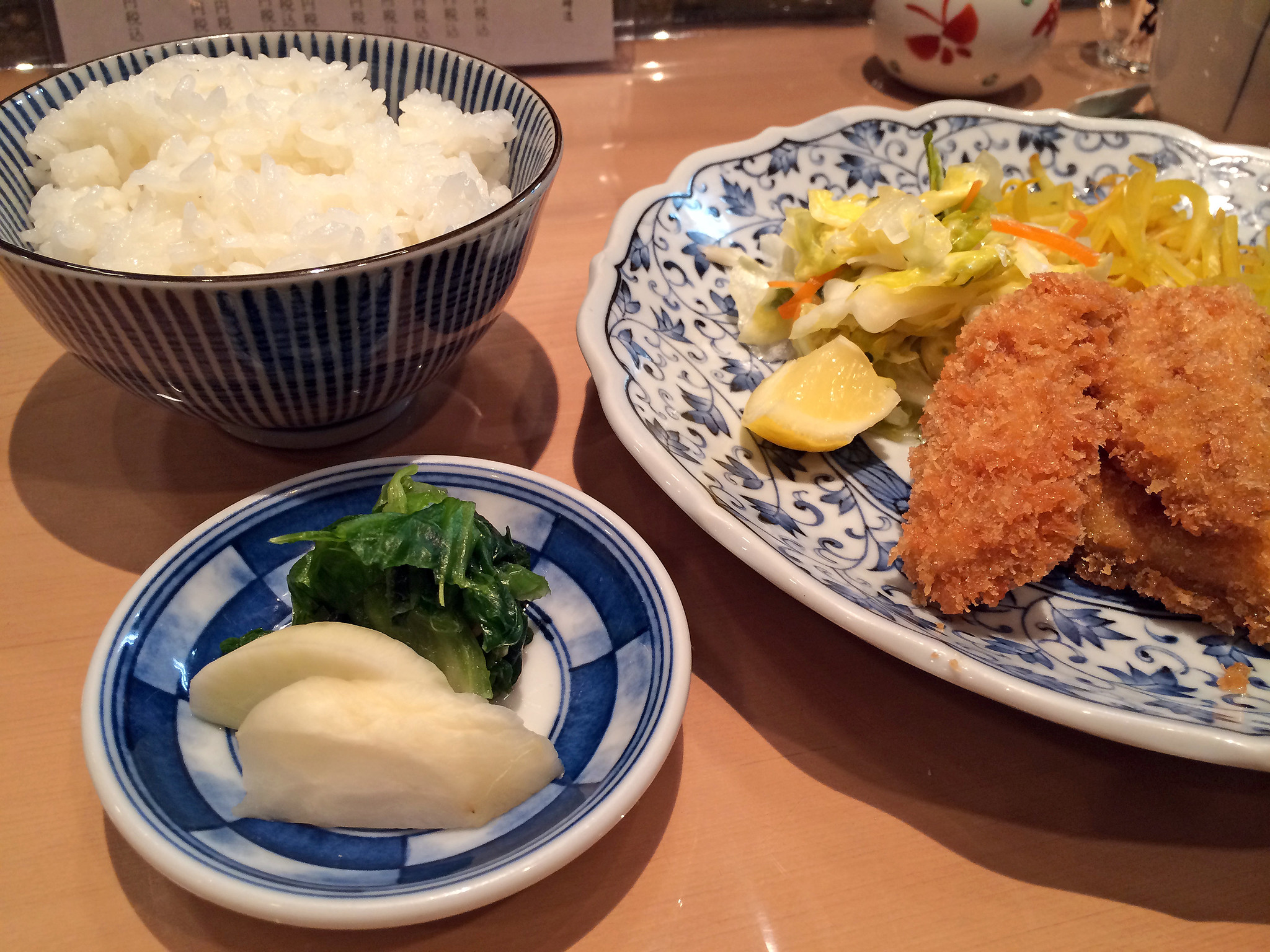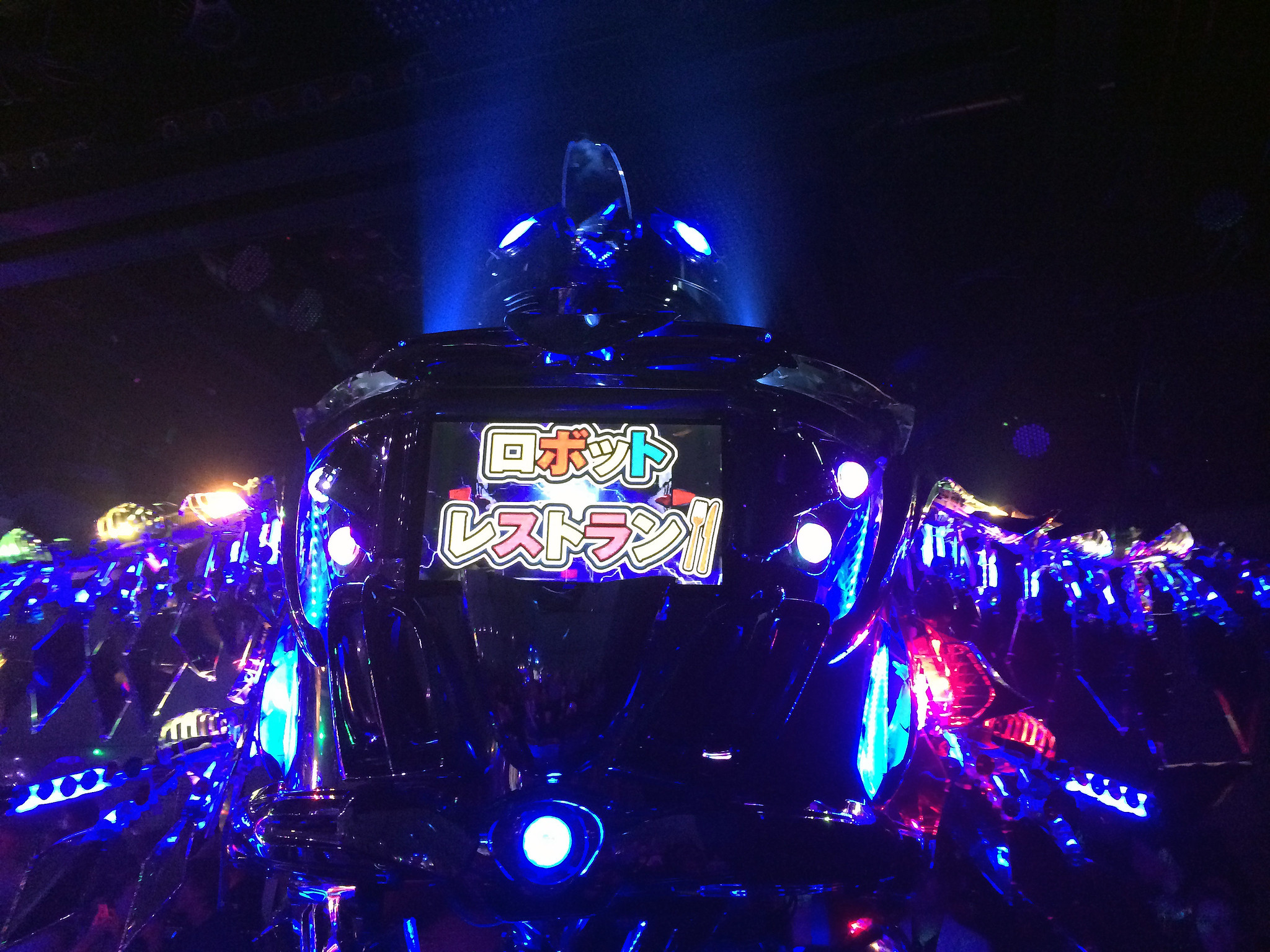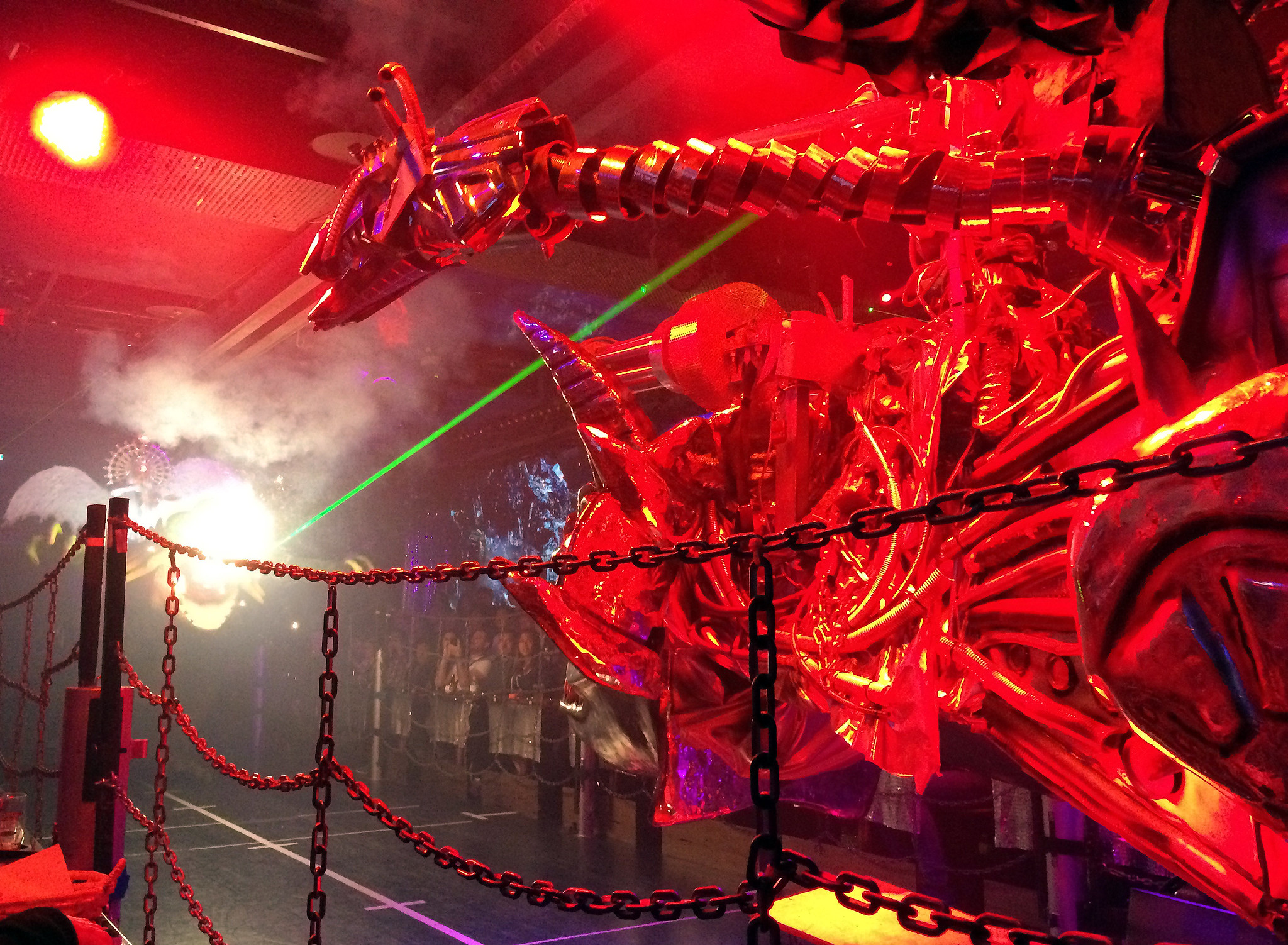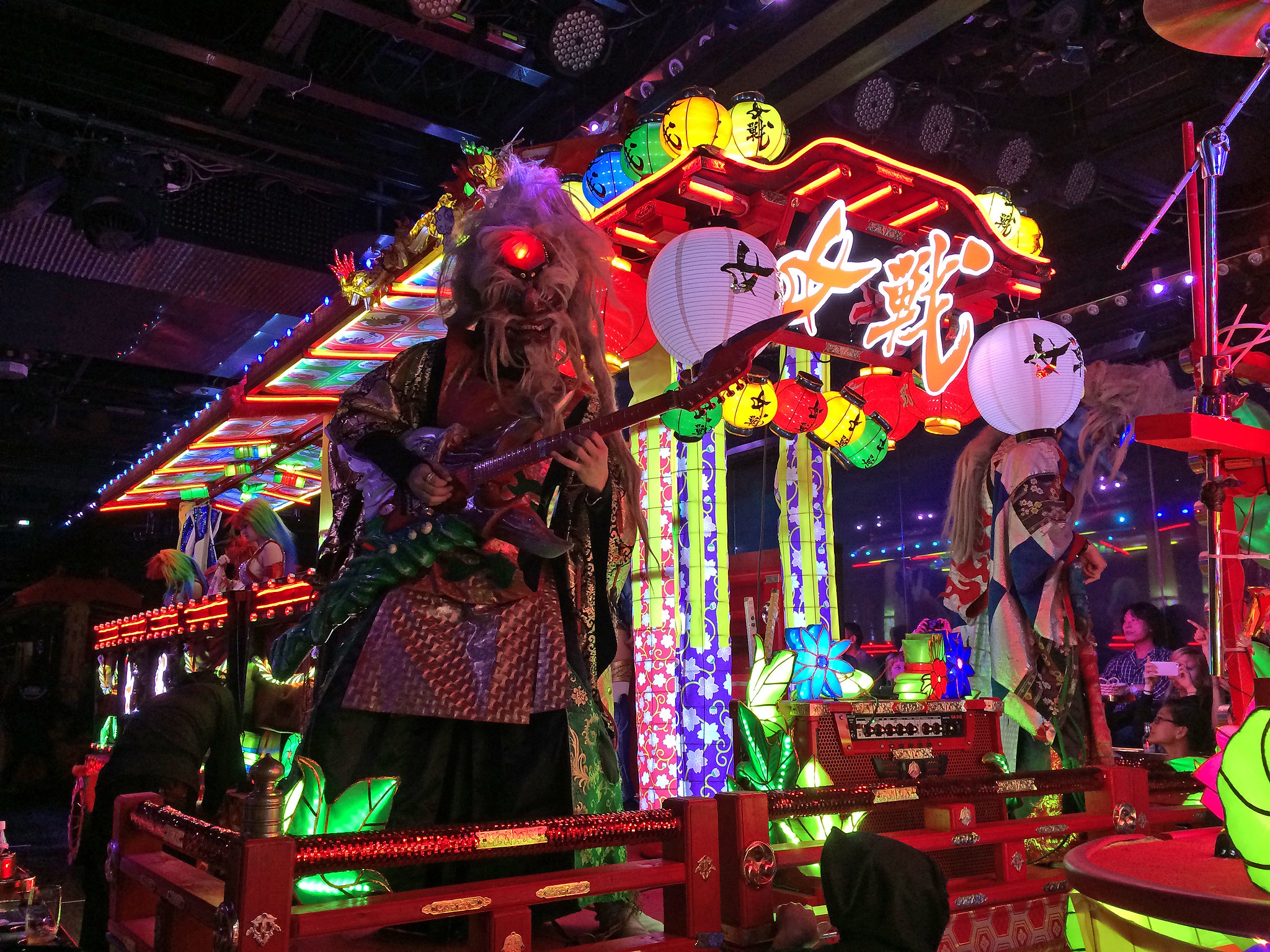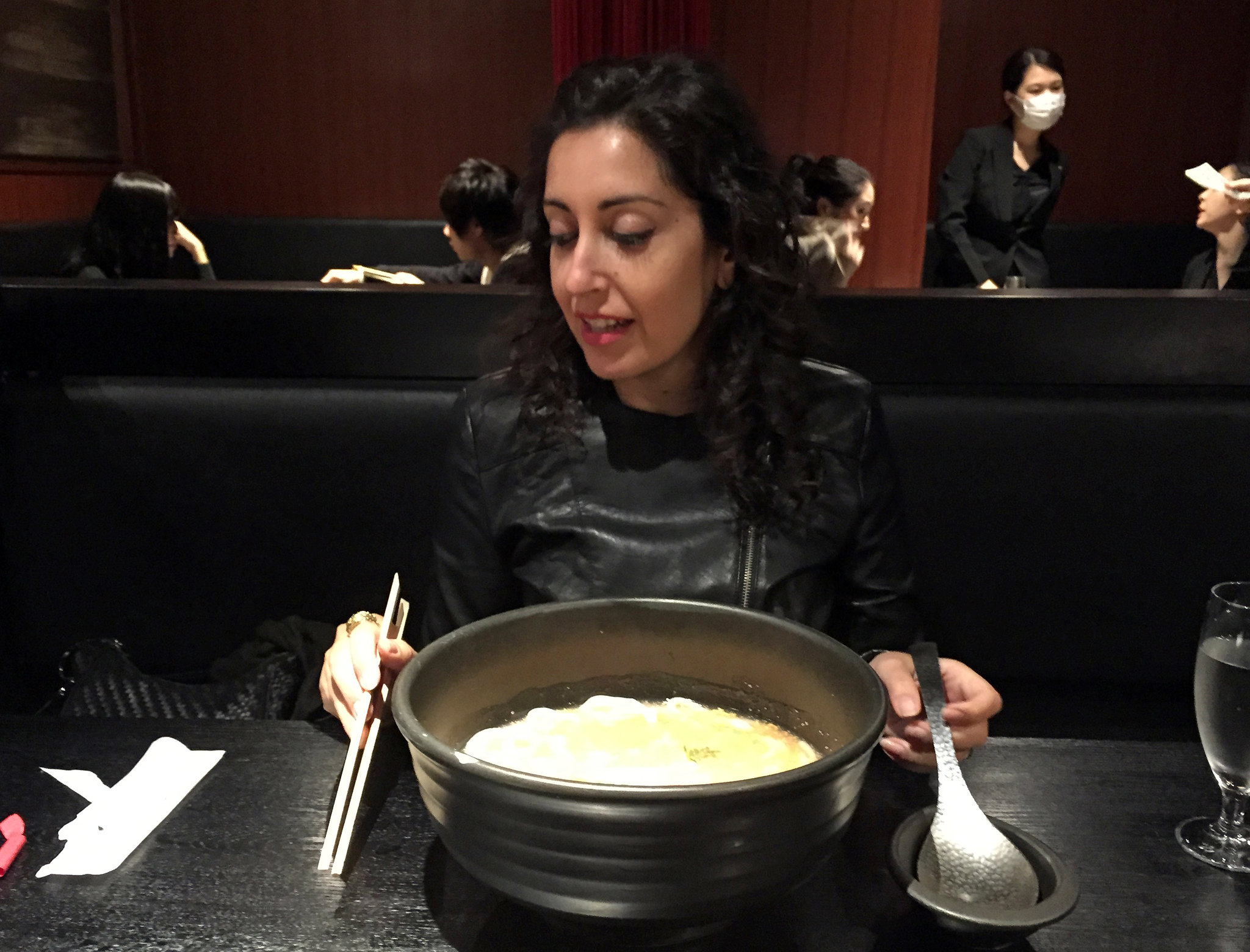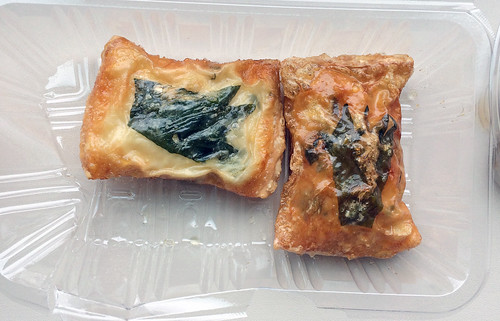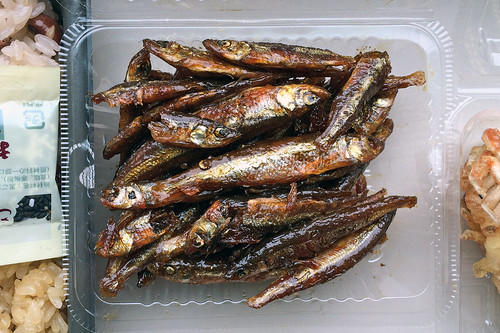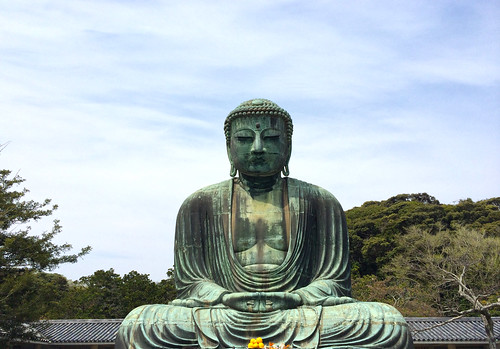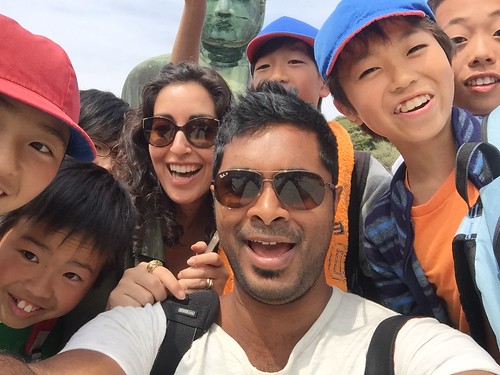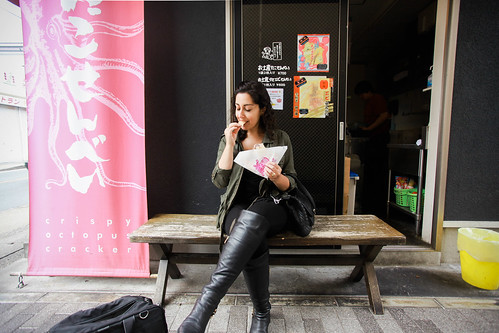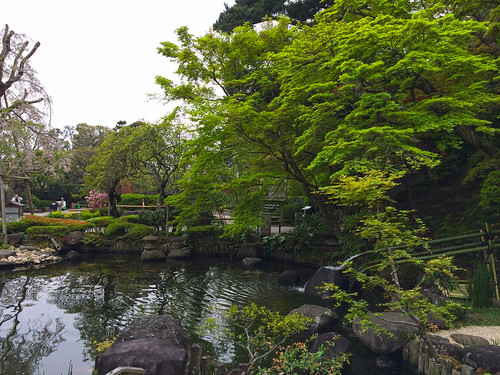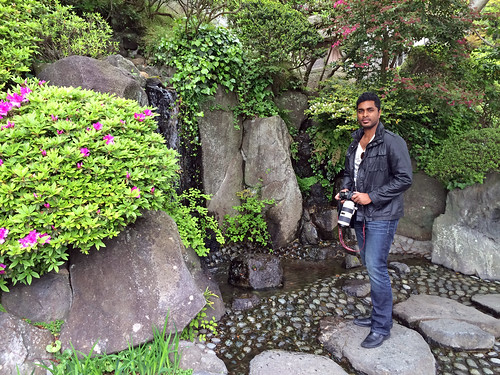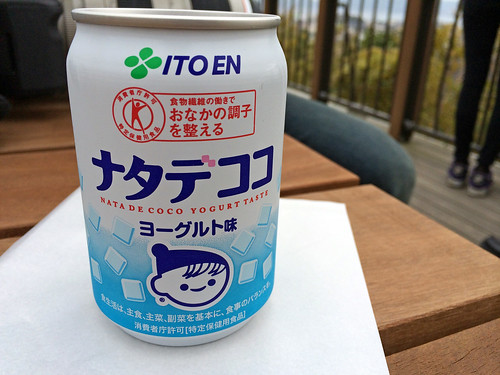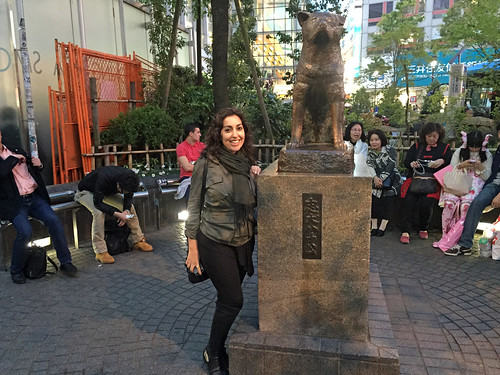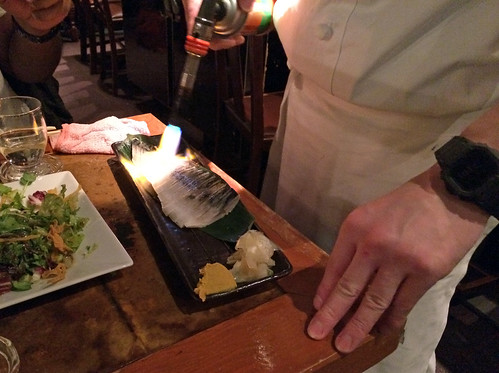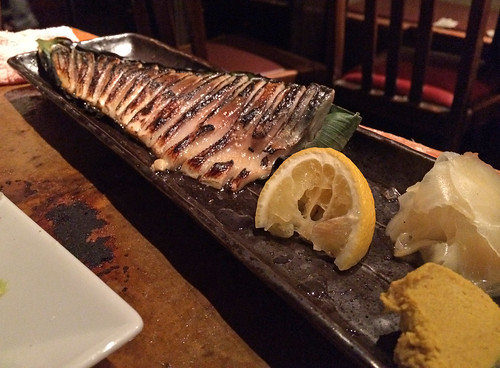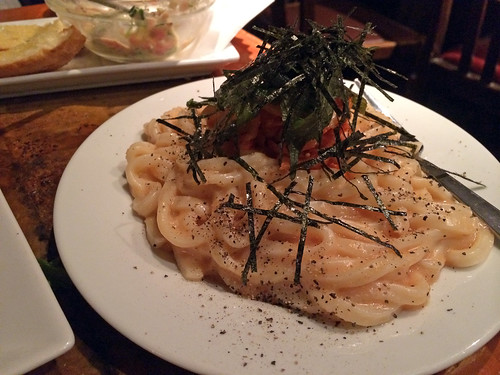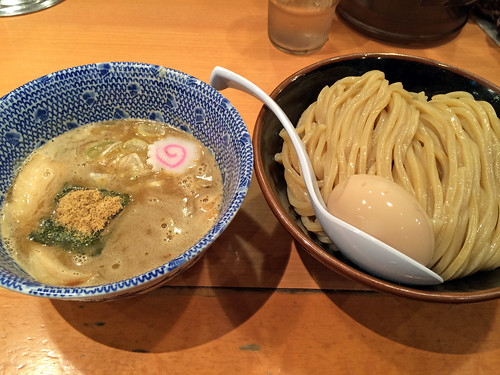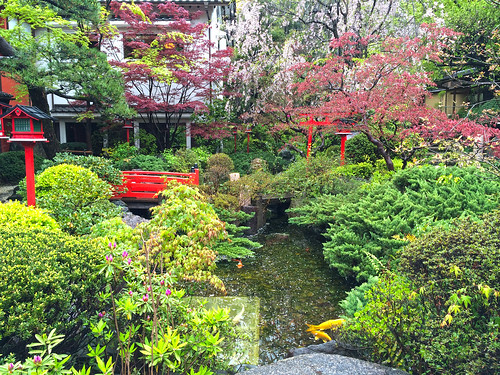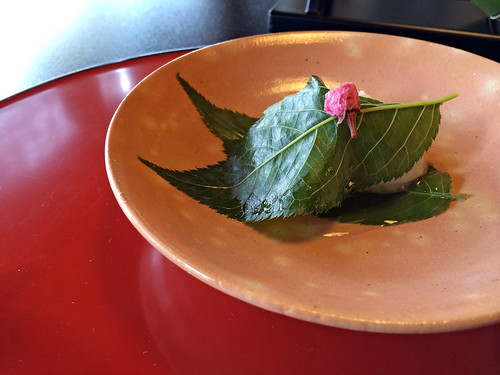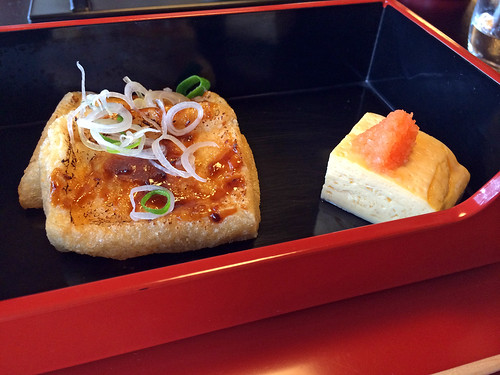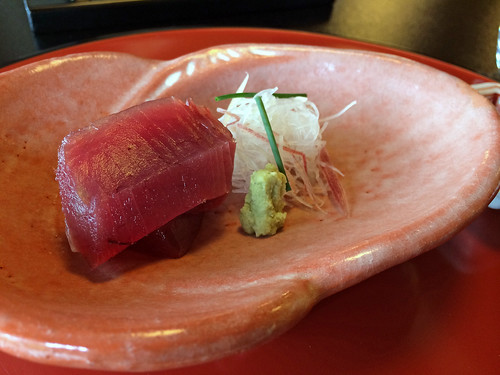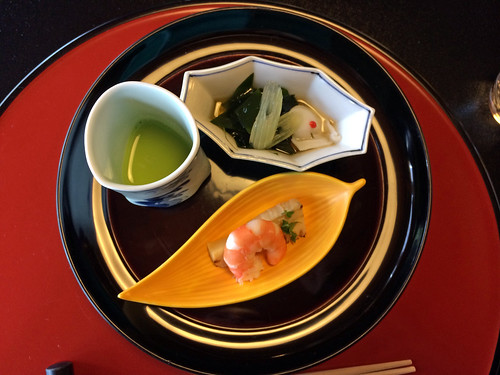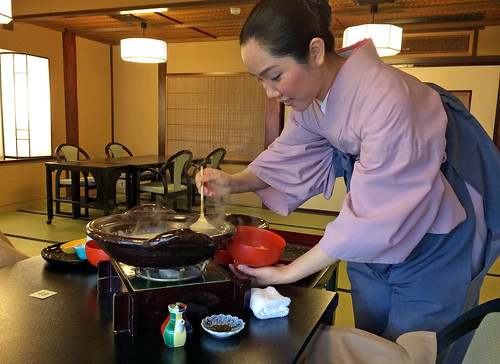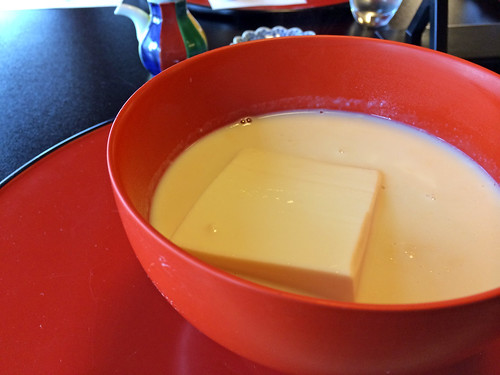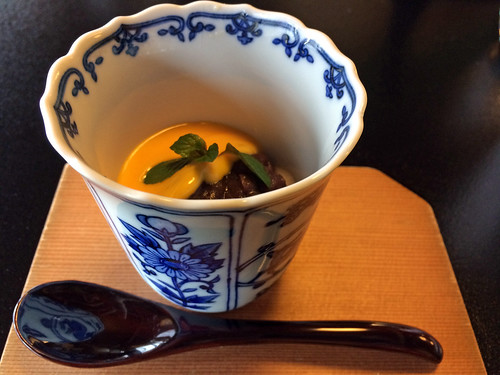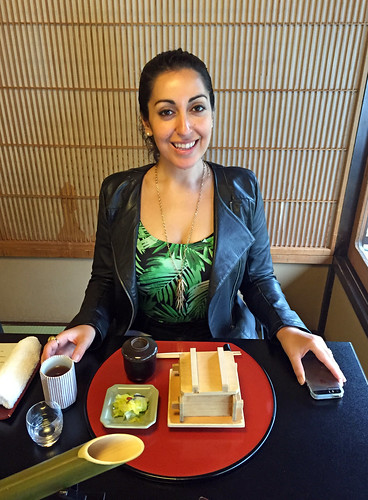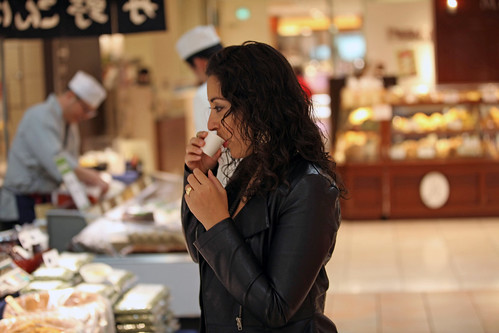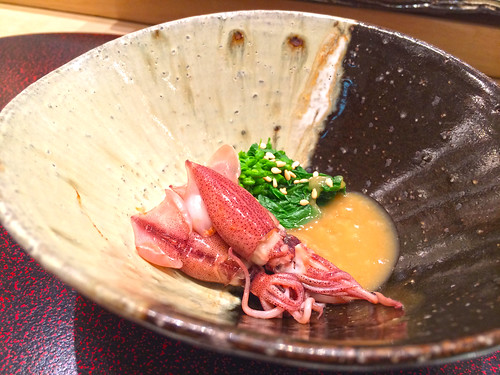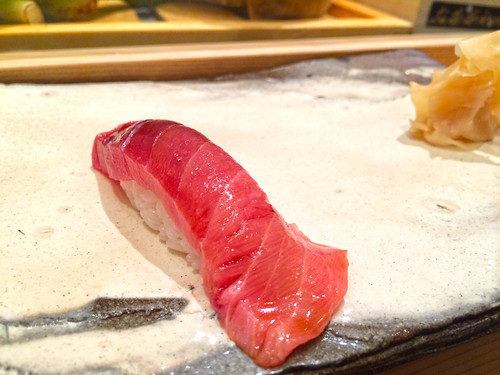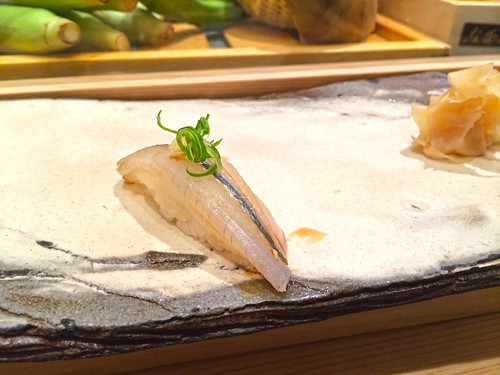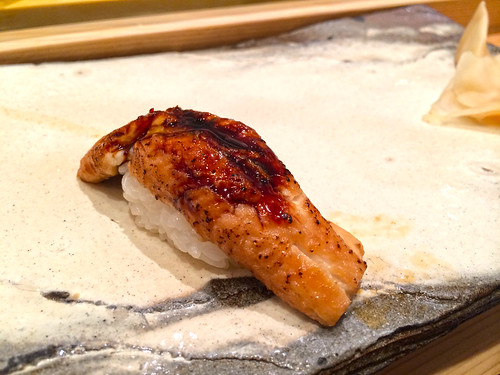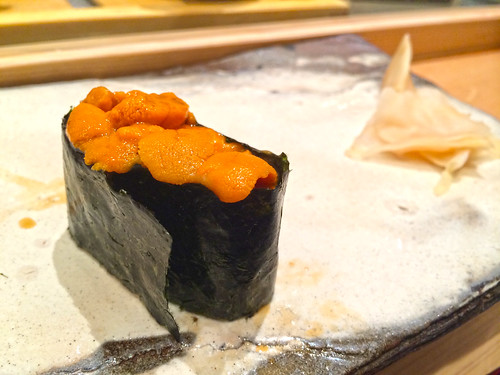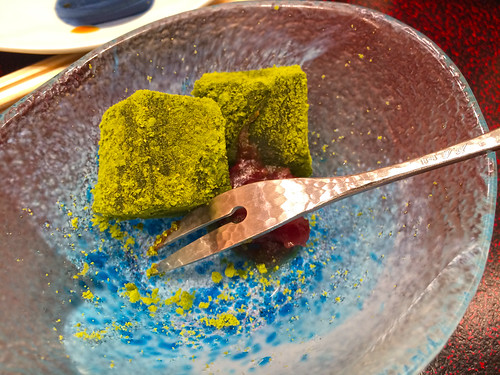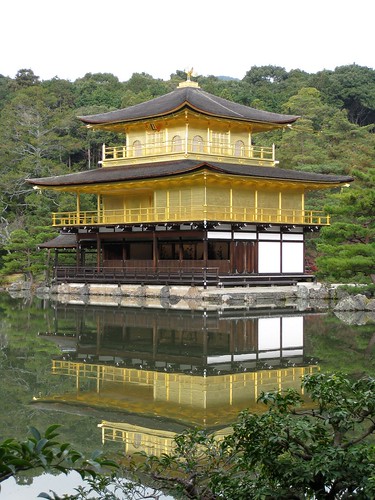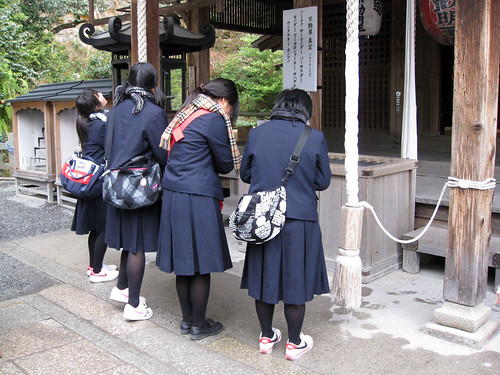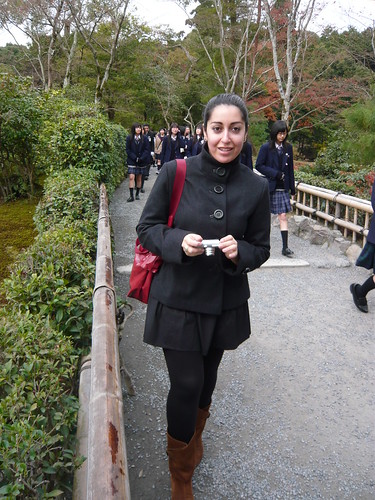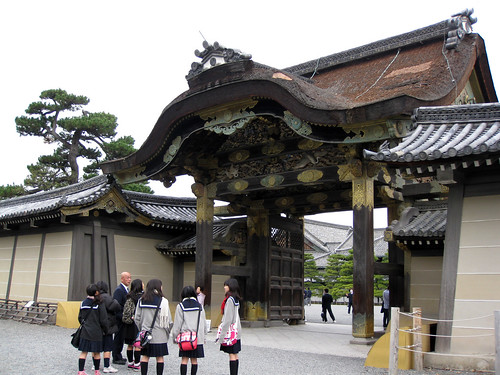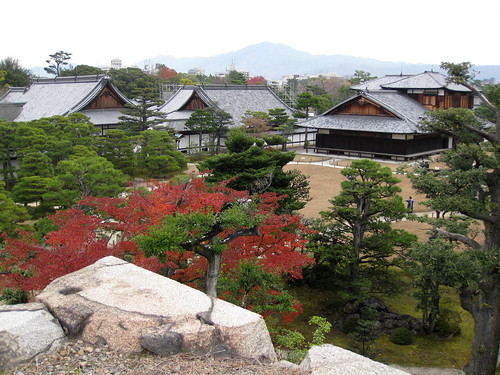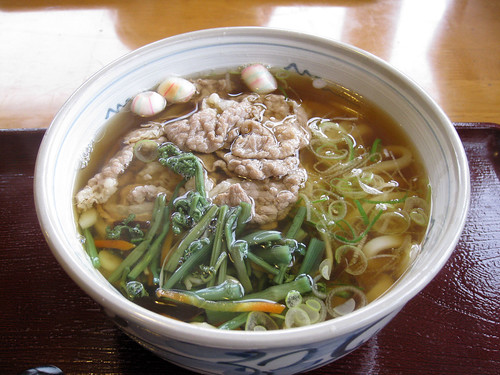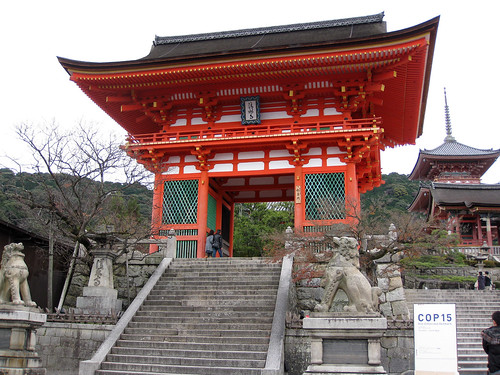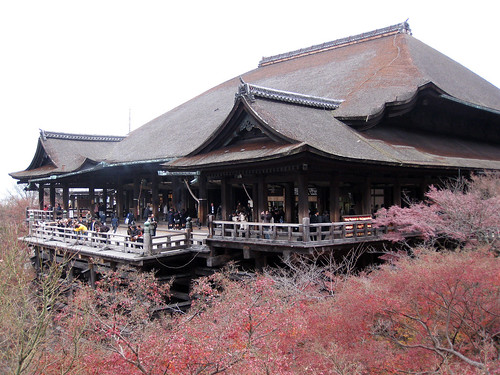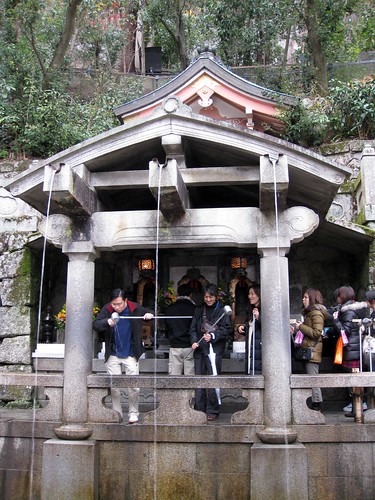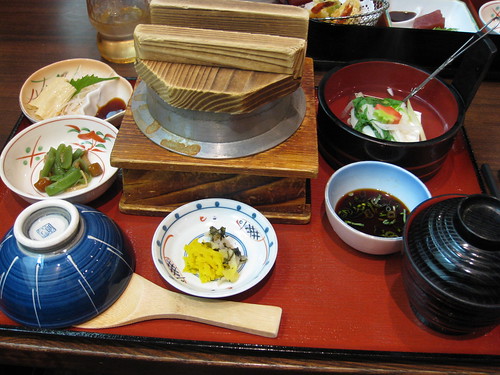Part of what makes Japan so special is the traveler’s ability to hop on a train and be transported somewhere entirely different in just one hour. Before we planned this trip, my friend Karen urged us to take a day trip to Hakone, famous for its hot springs and view of Mount Fuji.
After the train ride into town, we hopped off to explore the Hakone Open Air Museum, which features sculptures on its spacious grounds that blend into gorgeous views of the surrounding valley and mountains. The museum also includes a sizable Picasso collection and a relaxing hot spring foot bath for visitors.
Next it was back to Chokoku-no mori train station and a quick chicken katsudon lunch set before stopping at the Hakone Museum of Photography.
This museum, like the previous one, boasted incredible views of the region, and we soaked it all in over matcha tea and cherry blossom wagashi before heading to Koen Shimo station to board the funicular. Are you keeping track of the stations, yet? Hakone does not play when it comes to diverse transportation.
Our next stop was the Hakone Ropeway, an aerial lift connecting us between Sounzan and Togendai via Owakudani. Owakudani literally translates to “Great Boiling Valley.” Sounds relaxing, right? It’s a volcanic valley with active sulphur vents and hot springs and especially kuro-tamago, or “black egg.” The eggs are hard-boiled in the hot springs, turn black, and smell slightly sulphuric. I passed on the black eggs but bought a bag of smoky dried scallops instead. Souvenirs aside, Owakudani was freezing! Note to future travelers: it’s cold up there. Bring a jacket.
For those keeping track, our next mode of transporation was another aerial lift where we reached the dock at Lake Ashi. At Lake Ashi, we boarded a boat to take us to Hakone town. It was so overcast that Mount Fuji was nowhere to be seen, but the lake was stunning.
After a brief stroll through the side streets of Hakone, we boarded a bus which took us to Hayakawa River. Seriously, do the views get progressively more stunning as the day goes on in Hakone or what? After oohing and ahhing at the river, we strolled over to Hakone Yumoto station, where I grabbed us a snack of inari sushi to hold us over for the train ride back to Shinjuku Station in Tokyo, thus completing our Japanese Public Transportation Extravaganza.
We spent our next and last day in Tokyo enjoying some of our favorite foods, among which include department store sushi. No, I’m not joking. The otoro sushi at Kinokuniya’s food hall in Shinjuku may be the best I’ve ever had. This is the sushi dreams are made of. Sublime and perfect, like butter.
Our last meal on this trip was at Ramen Setagaya in Haneda Airport. We paid at the vending machine and ten minutes later sat down to stellar ramen. In the U.S., ramen of this caliber would garner hour-long waits. In Japan, it’s airport food.
What a perfect note to end our trip on.

